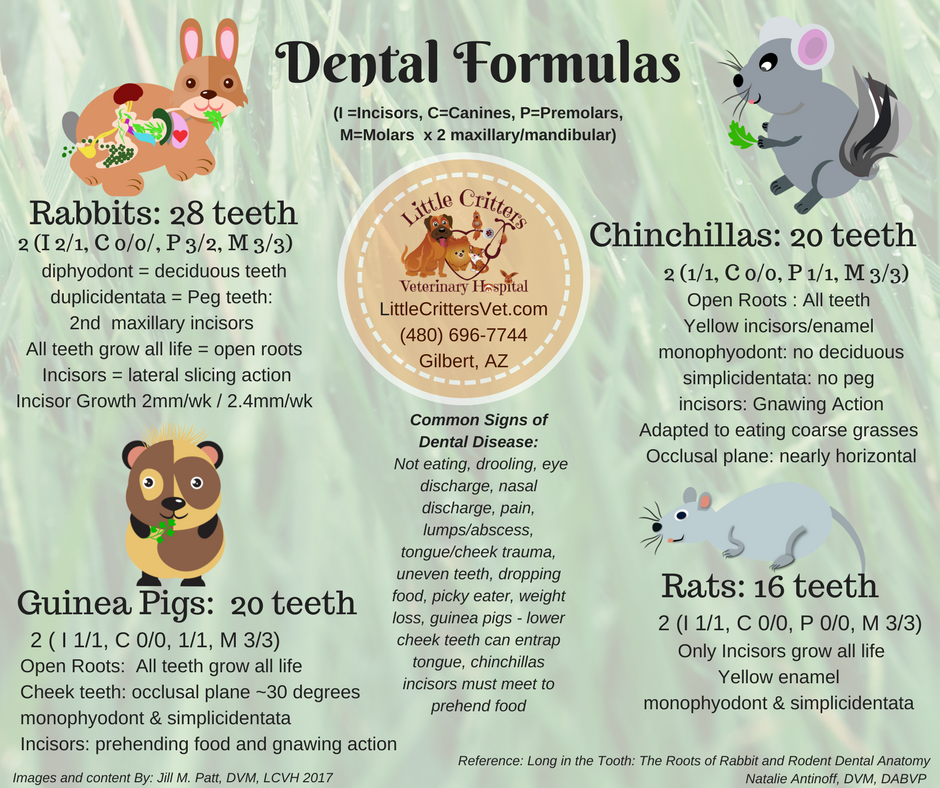|
Periodontal Disease in Rabbits

Normal Rabbit Anatomy - quick facts
Have 28 teeth
Dental formula: 2 (I 2/1, C 0/0/, P 3/2, M 3/3)
diphyodont = have deciduous teeth - lost in uterus or just after birth
duplicidentata = Peg teeth: 2nd maxillary incisors, just behind the upper primary incisors
All teeth grow all life = open roots
Incisors = lateral slicing action
Incisor Growth 2mm/wk / 2.4mm/wk
|
Rabbits have teeth that continue to grow throughout their life and this will occasionally result in problems. The upper (maxillary) teeth are thought to grow slightly slower then the lower (mandibular) teeth but the estimated rate of growth is about 2-3mm a month. Rabbits with malocclusion (the teeth surfaces are not aligned properly) will quickly develop spikes on the part of the tooth that doesn’t have the normal wear and the spikes can actually grow large enough to cause the rabbit pain from tongue trauma and may even entrap the tongue preventing normal eating. Often with malocclusion the owners will notice that the incisors (front teeth) have an irregular or angled end which reflects the abnormal occlusion of the molars. Rabbits that have this condition must be seen by a veterinarian on a regular basis (often monthly) to have their molars examined and reshaped. Because rabbits teeth grown continuously it is necessary for them to have continuous wear as well. Good ways to provide this are by feeding hay and providing toys that allow them to chew as well as play. All rabbits should be examined yearly and the exam should include an oral exam. The molars can be viewed quickly and easily in the exam room by using an otoscope (ear cone) inserted into the mouth and rotated around to view all the occlusional surfaces. Another thing to remember is that dental disease in rabbits doesn’t only affect the teeth. Many rabbits with tooth abscess will have tearing of the eye, jaw swelling and/or swollen (pushed out) eye. These are all signs of severe dental disease and will require a more extensive work-up which will often include general anesthesia and x-rays (radiographs). Note the image above – a skull x-ray of a rabbit with dental disease.
- Summary: Rabbit teeth grow throughout life
- Malocclusion results in painful spikes and difficulty eating
- All rabbits need a dental exam at least yearly
- All rabbits need regular tooth wear with hay and
- Tearing eyes and swelling is often a clue to severe dental disease
|

|
|